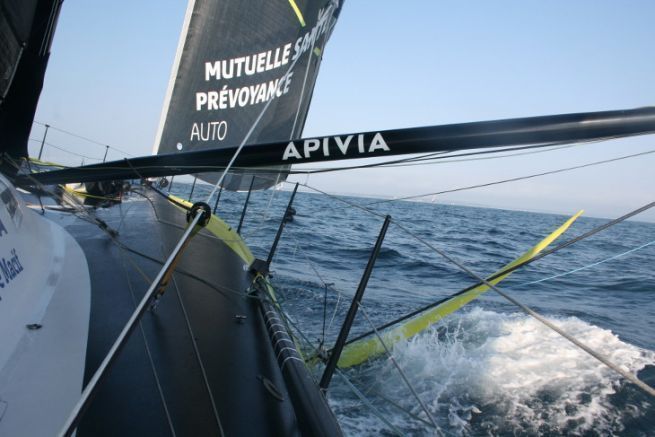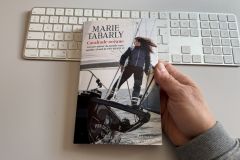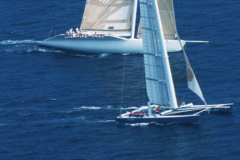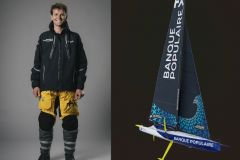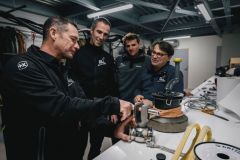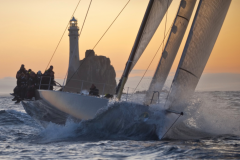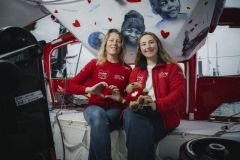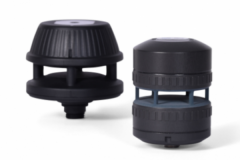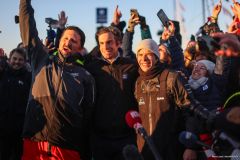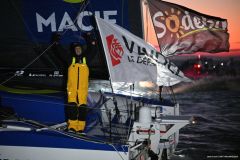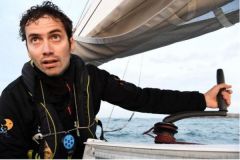Skippers briefing in Port La Forêt
A recognized structure in the field of ocean racing since its creation in the 1990s, the Pôle Finistère Course au Large in Port la Forêt brings together the biggest names in French sailing in its training courses. Before each major event, the center puts skippers and the latest generation of boats on the water together to allow them to gauge each other and work on their sailing skills. We were lucky enough to board Charlie Dalin's IMOCA Apivia for the last meeting before the Jacques Vabre 2021.
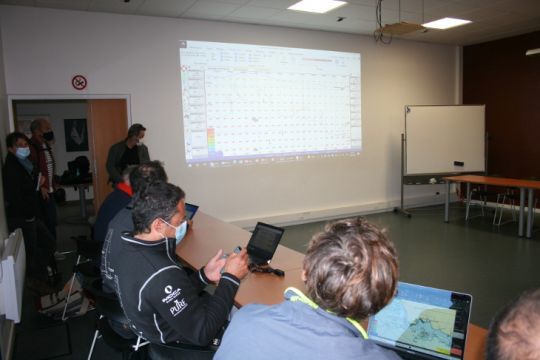
The day starts with a briefing in the room to study the weather. On this day, the main issues raised were the strong gale forecast for the next day, which called into question the next day's sailing. Once the cancellation was confirmed, Jeanne Grégoire, the Pole's trainer, explained the conditions and the program: an upwind leg from the tip of Beg Meil to the Birvideaux plateau, then a downwind leg to the Glénan and the Baie de la Forêt.
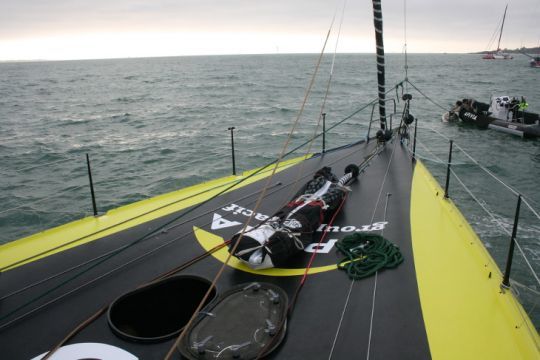
A large team around the sailor
Although the Transat Jacques Vabre is a two-handed race, sailing is a team sport. And a large one... We can see this quickly from the start in the semi-rigid boat from the port of Concarneau (Apivia's home port). In the absence of Paul Meilhat, Charlie Dalin's partner for the race, Jean-Luc Nélias will assume the role of co-skipper. In addition to the duo, Jean-Yves Gau, boat captain of the boat and Ulysse, engineer at Mer Concept, will be present for the day's sailing. But if they will do all the navigation, 3 people are waiting for us on board. They have previously trimmed the boat according to Charlie Dalin's instructions (move the equipment to the right place to balance the weight according to the speed). They help with the maneuvering and hoisting of the mainsail, a physically demanding operation...
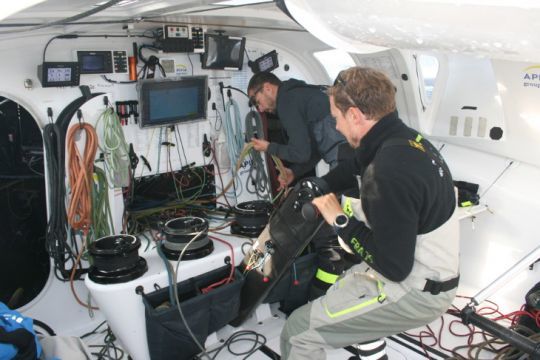
Sailboats under the microscope
With only a few weeks to go before the Transat, the boats are all ready for the big crossing and the sailors have come to break in and observe the competition. "All the boats have received their new sails, it's an opportunity to observe their performance" explains Charlie Dalin.
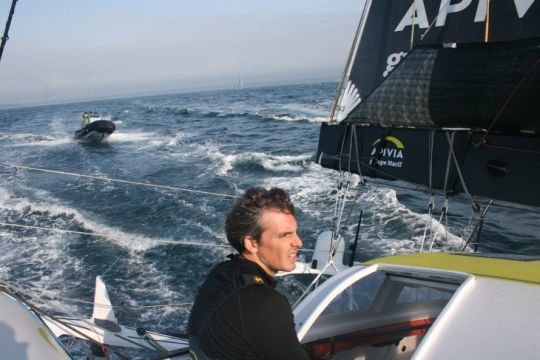
During the start procedure, the teams in semi-rigid take the opportunity to photograph the competition.
Upwind performance above the other IMOCAs
With an upwind start in a breeze oscillating between 12 and 15 knots, the hull of Charlie Dalin's boat, designed by Guillaume Verdier, is working wonders and confirms the pre-season results. The yellow and black boat has a much better average speed than the competition. The other boats are quickly in our rear panel. During the upwind leg to Birvideaux, the IMOCA boat outdistanced its competitors by more than 2 miles in one hour.
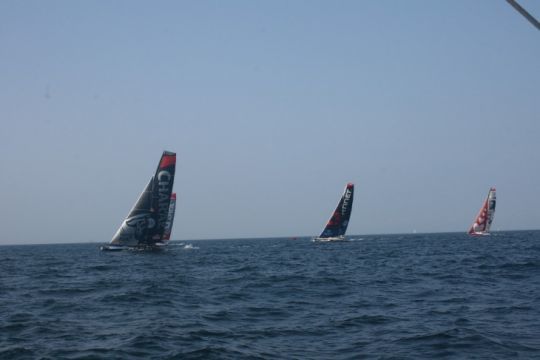
In terms of comfort, if for Charlie Dalin, used to the movements of the boat in the southern seas, these are mild conditions, the noise and the few shocks in the small swell of the day let us imagine the atmosphere at high speed in heavy seas. The boat will still go up to 19 knots upwind.
Downwind battle with Charal
Arriving ahead of the others, we had time to put on the mast again, switching the sails and equipment to starboard for our return on port tack. This time, it's a downwind start that awaits us. A little late in relation to the timing, you can quickly feel Charlie Dalin's frustration as he faces a boat with a slight speed deficit. While Jérémie Beyou has gone ahead, the crew is quickly moving the equipment back to get the bow out of the water. Tenths of knots are quickly gained. Charlie Dalin took the opportunity to test the headsail configurations and observe the competitors' choices. The foil setting is regularly adjusted according to the speed of the boat and the wind strength. If the sensors, displays and figures are omnipresent, we feel that there is room to get to know the boat and the sensations. After a successful round the world race and pre-season races, Charlie Dalin knows his boat inside out.
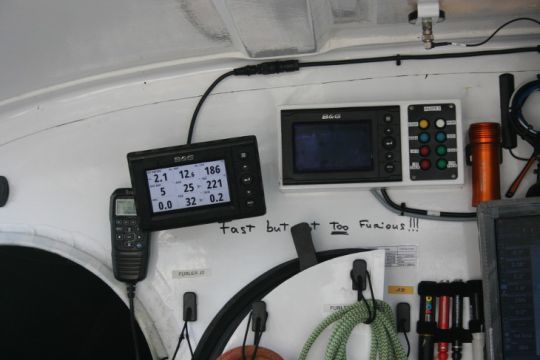
Apivia is progressively coming back to Charal with whom a luffing battle is going on. It was finally Charlie Dalin who found the opening to overtake Charal and end the debate.
With the wind easing, the Lorient boats preferred to go to shelter in Lorient before the next day's storm and we headed for Concarneau.
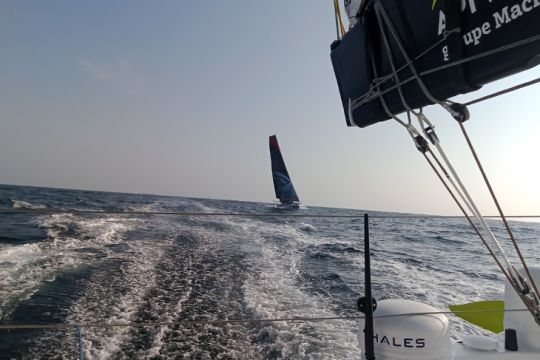
A navigation far from the pleasure boat
If, as for any test, "there were a few knots of wind missing" according to the skipper, Apivia made close to 20 knots. It certainly did not reach 30, but we can imagine the boat's performance. Sailing in the warmth of the closed cockpit at high speed is far from being a pleasure, at less than 10 knots at recall, and you have to remember to look at the wake to measure the performance of the boat. In the meantime, these machines fuel the dream and will do so again on the next transatlantic race.
